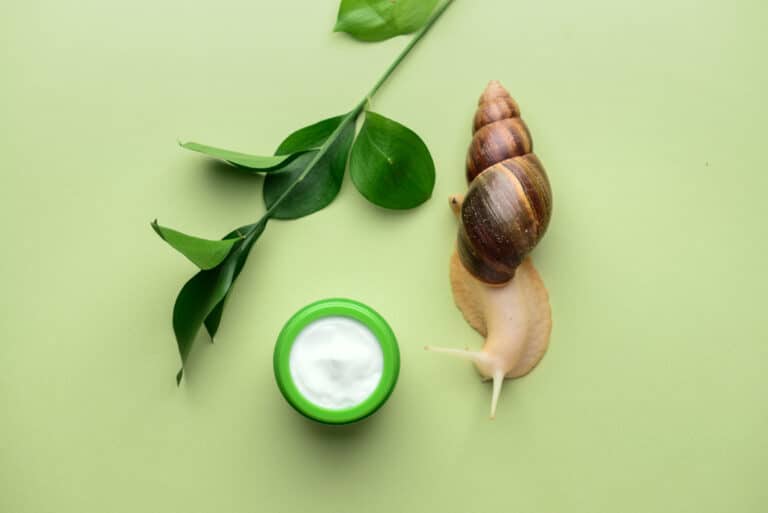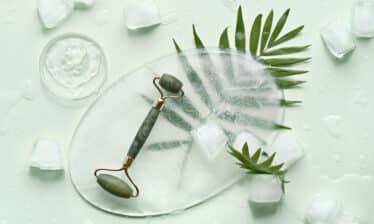The skincare industry has a long history of using ingredients from the natural world to create new complexion-perfecting treatments. One of the oldest red pigments is carminic acid, a reddish hue created by mashing up cochineal beetles. Beetle dye, both organic and synthetic, is still used in cosmetics today.1 Skincare aficionados may also be familiar with products that contain algae, bee venom, and skin oil from sheep called lanolin, all of which offer real benefits to the skin.
The latest skincare trend to come from nature is snail slime. Though it’s marketed under more scientific names like snail mucin or snail secretion filtrate, skin care experts suggest that snail slime for skin is a useful addition to your beauty routine.
What Is Snail Mucin?
As anyone who has ever watched a snail glide along the ground knows, the shelled critters leave a trail of slick, sticky mucus wherever they go. This mucus from a snail’s foot lubricates the path to help them move. The mucus that they secrete from their backs protects and heals their skin from minor injuries.2 The properties that protect snail skin have also been found to protect human skin.
You don’t need to rub snails directly on your face to get the benefits of snail skincare. Skincare companies harvest snail slime and add it to products like creams or serums. The slime is collected in a lab, and whether or not snails are killed for mucin depends on the collection methods.
How Does Snail Mucin Work?
Research shows that there are multiple snail mucin benefits, including:
Hydration: Snail mucin contains hyaluronic acid. This is a naturally occurring substance that is used in many products as a moisturizer. It may help maintain the skin barrier, protecting the skin from pollution and other external elements.3
Healing: Snail mucin has both anti-inflammatory and antimicrobial properties. This can be helpful in soothing and healing irritated skin. It may also have benefits for people with acne. The bacteria-fighting elements might help to prevent breakouts, though there is no conclusive research yet on snail mucin as an acne treatment.4
Anti-aging: Snail mucin contains a natural form of glycolic acid. This alpha hydroxy acid (AHA) is often used for treating signs of aging, such as fine lines and discoloration. In one study, participants who used snail mucin for three months showed a reduction of fine lines and wrinkles and improved skin elasticity, brightness, texture, and firmness.5
Adding Snail Mucin to Your Routine
Choosing a snail mucin product depends on what complexion concerns you have.
If you want the moisturizing benefits, consider a cream for use at night, such as the SeoulCeuticals Korean Skin Care Snail Repair Cream or the MISSHA Super Aqua Cell Renew Snail Cream.
If you’re looking to reduce the signs of aging, consider a serum like the TikTok-famous COSRX Advanced Snail 96 Mucin Power Essence. You can also try a mask-style application like the LA PURE Korean Face Mask or the Gold & Snail Hydrogel Eye Patch by Petitfee.
Snail mucin is safe for most skin types, but you should always perform a patch test before trying a new ingredient. Place a small amount of product on your wrist to make sure it won’t cause irritation or an allergic reaction. If you are using prescription skin products, talk to your dermatologist before using snail mucin.
SOURCES:
- Smithsonian Magazine: “Scientists Are Making Cochineal, a Red Dye From Bugs, in the Lab.”
- Mayo Clinic: “The truth about snail mucin for skin care.”
- Health: “Everything You Need to Know About Snail Mucin.”
- Mayo Clinic: “The truth about snail mucin for skin care.”
- Journal of Clinical and Aesthetic Dermatology: “Efficacy and Safety of a New Cosmeceutical Regimen Based on the Combination of Snail Secretion Filtrate and Snail Egg Extract to Improve Signs of Skin Aging.”






